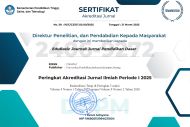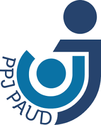See the schedule on important dates to know the deadline for registration and submission of the paper
Here are the guidelines for writing a paper on EduBasic Journal: Jurnal Pendidikan Dasar
- Titles are written in bold, Times New Roman (TNR) size 14 and all capitalized words. if the complete subtitle, then use capital letters in the beginning.
- Space between lines of 1 and apply to all body papers.
- The author’s identity is written in the style of the letter TNR and size 11; Full name of the author does not use the title, authors include email.
- The abstract is written in the style of the letter TNR and size 11 and contains: Background, aim, methods, and research results. All are summarized in 200-250 words with 5 keywords.
- Papers consist of 6 parts; Introduction, Methods, Result and Discussion, Conclusion, and References/bibliography.
- Introduction must include the background of the research, the significance of the research, and the issues raised in the research. The introduction should also include a review of related literature and justification of the research’s originality, It is a must to provide a synthesis of the previous related studies to show the state of the art, and state explicitly the research gap which the present research has attempted to fill in. The research gap here refers to what has been done and what has to be done in the present research. End the introduction by stating the objective of the research explicitly at the end of the introduction and how your research will meet this objective.
- Methods should follow the general guidelines for the methodology of quantitative research, qualitative research, and mixed methods. It is necessary, that subheadings are allowed to explain research participants/subjects, data collection methods, data collection instruments, and data analysis. It is not necessary to quote definitions of the approach/method applied in the research. Focus on the step-by-step methods taken by the research instead of the theoretical.
- Results and Discussion provide the findings of general results of the research and sufficient discussion of the results. Illustrations, pictures, and graphs are necessary to support the presentation of the findings. You may integrate the results and discussion or separate the two. Discussion included results based on the theoretical framework used. Authors should also compare the research results to results of previous research on a relevant topic that you mention (or synthesize) in the introduction. What are the similarities and differences? What does your research contribute to the existing research on the relevant topic?
- Conclusion may restate the findings of the research; however, it should not merely state the major findings. Instead, it should add to the understanding of your readers of the topics and issues raised in your manuscript. Furthermore, your conclusion should add emphasis to your manuscript, pull the different parts of the manuscript together, emphasize important points, and demonstrate the possibilities for future exploration of the topic under research. Finally, provide some possible implications of your research for the field of study and education in general
- Writing a reference/bibliography uses guidance from the American Psychological Association (APA 7th).
Examples
A textbook: Gronlund, N.E. & Linn, R.L. (1990). Measurement and Evaluation in Teaching. (6th ed.). New York: Macmillan
Textbooks compiled: Effendi, Sofian. (1982). The elements of scientific research. In Masri Singarimbun (Ed.). Survey research methods. Jakarta: LP3ES.
Translation of book: Daniel, W.W. (1980). Nonparametric statistics applied. (Translation Tri Kuntjoro). Jakarta: Gramedia.Of paper/thesis/
Dissertation: Suyanto, Slamet (2009). The success of schools in national examinations in terms of organizational learning. Dissertation, unpublished. State University of Jakarta.
From the Journal: Pritchard, P.E. (1992). Studies on the bread-improving mechanism of fungal alpha-amylase. Journal of Biological Education, 26 (1), 14-17.
Collection of research abstracts or proceedings: Paidi. (2008). Urgency development abi-ladies-solving and metakog nitif high school students through learning biology. Proceedings, Seminar and National Conference organized by the Faculty of Mathematics and Natural UNY, dated May 30, 2008 Yogyakarta: Yogyakarta State University.
From the Internet: White, H. (2007). Problem-based learning in introductory science across disciplines. Accessed on March 27, 2007 from http://www.udel.edu/chem/white/finalrpt.html.
- 1. Pictures, graphs, and tables are presented with the following provisions:
- The size of pictures, graphs, and tables to adjust the paper size
- Title images and graphics written in the middle of the bottom and be numbered
- The title of the table in the middle of the top and be numbered




.png)




.png)
1.png)


1.png)

.png)